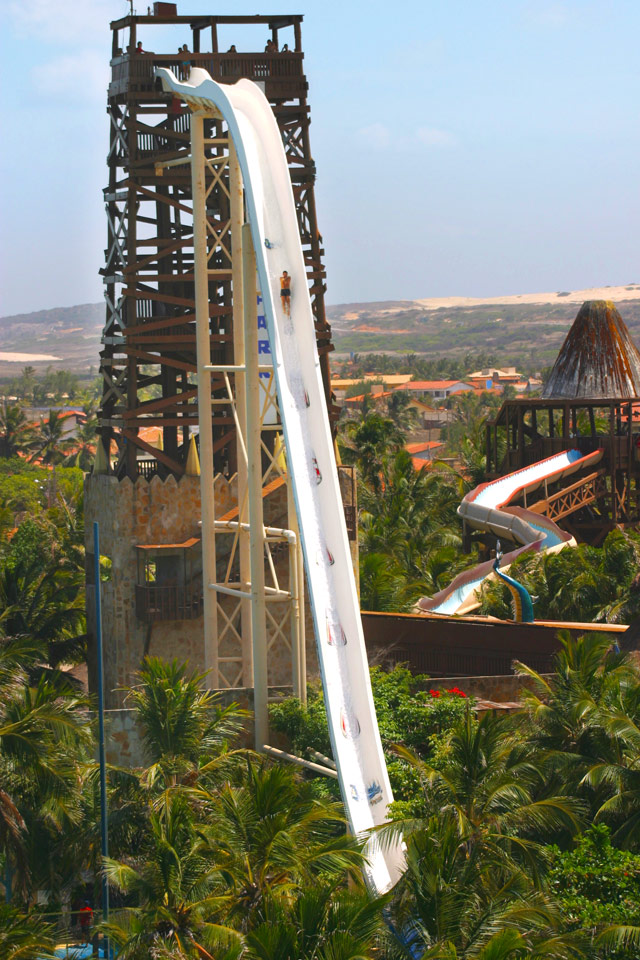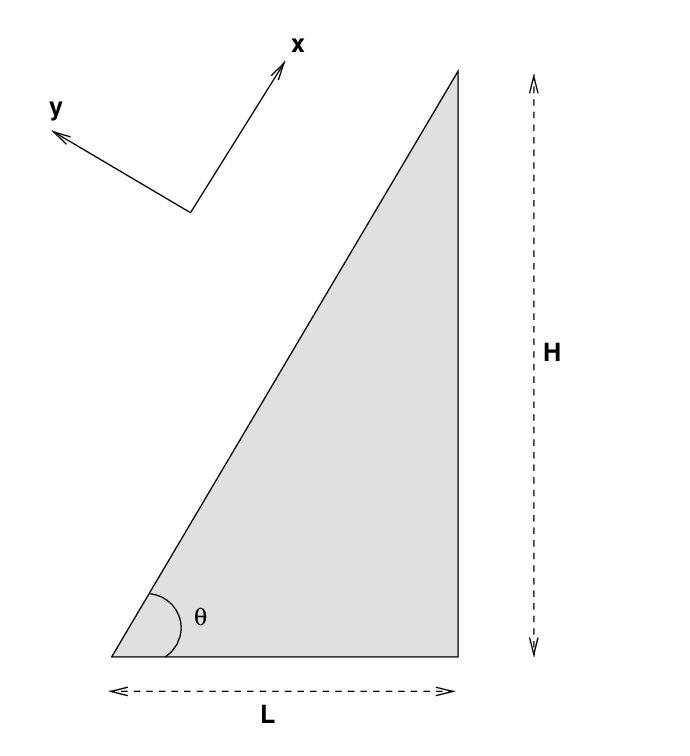
Image courtesy of AmazingPlaces.com
 Copyright © Michael Richmond.
This work is licensed under a Creative Commons License.
Copyright © Michael Richmond.
This work is licensed under a Creative Commons License.
One of the largest waterslides in the world is the Insano, located in a park near the city of Fortaleza in Brazil. It's ... pretty big.

Image courtesy of
AmazingPlaces.com
Let's analyze the motion of a person descending this device. We'll make a few simplifying assumptions:
Our model doesn't look quite as pretty -- no palm trees or view of the Atlantic -- but it will simplify the analysis.

The Insano's dimensions are roughly H = 41 m and L = 13 m, yielding an angle of θ = 72.4 degrees.. A standard adult human being has a mass of m = 60 kg. Consider a person who dares to enter the slide.
Now, at the bottom of the slide, riders shoot into a pool of water to slow down. Amusement parks have learned (the hard way) that accelerating people at more than about three gees is a very bad idea: it leads to injuries and, even worse, lawsuits. So, suppose that the pool is designed to decelerate riders at exactly a = -2 gees = -19.6 m/s2.
 Copyright © Michael Richmond.
This work is licensed under a Creative Commons License.
Copyright © Michael Richmond.
This work is licensed under a Creative Commons License.